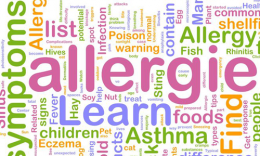Prevention Strategies to Avoid Burnout

May is Mental Health Awareness Month, and research indicates that 44% of US workers feel burned out. According to data from SHRM, workers who are burned out are three times more likely to actively search for another job and significantly less likely to exceed baseline expectations. These statistics make it the perfect time to improve emotional well-being and prevent burnout.
Burnout often includes feelings of emotional exhaustion, cynicism, a lack of interest, or depersonalization (Kenny & Sheffield, 2019). Over time, burnout increases the rate of depression, anxiety, and other mental health conditions. Its impact is significant. It doesn’t affect only you but everything on and off the job, including performance, team, volunteers, organization, and personal relationships. Today, burnout is recognized as an actual medical condition, compared to times when it was classified as excessive stress.
When leaders are asked to do more with less, take on heavy workloads, address a lack of volunteers, budget cuts, face over-the-top performance expectations, an absence of support, and exhaustion, their mental health is negatively impacted. When pressure builds and stress becomes unmanageable, they enter the debilitating state of burnout.
According to Gallup, burnout affects 7 out of 10 people. So, how do you avoid burnout for yourself and those you work alongside?
As a leader, you have a high impact on averting burnout. Here are some prevention strategies.
- Openly discuss burnout with your team. Don’t try to hide it. Instead, let people know they can come to you and discuss the factors driving their feelings.
- Manage people in a way that motivates them. This includes praising, encouraging, or respecting and allowing people to provide honest feedback or criticism.
- Provide clarity and consistency for roles, responsibilities, actions, and guidelines. Roadblocks, constraints, and harsh consequences cause burnout.
- Offer flexibility. A lack of it is a leading factor in why people leave their current roles.
- Promote and demonstrate a healthy work-life balance. For example, encourage others to take a few hours or days off for special occasions or a health break. Urge people to disconnect and not work during their time off, which can be crucial to preventing burnout.
Here are some personal strategies for preventing burnout.
- Discover what you need from work. Ask yourself:
-
- Is your organization the best fit for you? If not, what needs to be added?
- Does your role leverage your strengths or promote your weaknesses?
- Is the work you do rewarding?
- Are you included in decision-making?
- Do you experience barriers or roadblocks to getting things done?
- Seek creative outlets. Do more of what you love or seek to learn something new. Travel, write, attend a community education class, or learn a new language.
- Improve self-care. Rest, increase sleep to 8-9 hours, walk for 30 minutes daily, cut out sugar, pray, meditate, or get a massage—activities just for you.
- Get honest about job stressors. Evaluate what keeps you up at night about your day-to-day endeavors. This can be challenging, but it’s essential for burnout prevention.
- Connect with people. Your health may depend on it. Making social connections is proven to lower anxiety, regulate emotions, increase self-esteem, and improve your immune system. Activities such as starting a book club, sharing a meal with others, planting a community garden, or helping elderly neighbors are a few ways to connect.
- Reduce screen time and try to go analog (sans digital device) from 5:00 pm until bed, which will help you connect with people and improve self-care.
Times of burnout can feel overwhelming, but it doesn’t have to last forever. The key is understanding and addressing the early symptoms before they take hold. By implementing professional and personal strategies, you can create a prevention plan. If you have experienced burnout, let it serve as an example to help others live a more fulfilled life and career.
Click here to learn more about the benefits of using secure children’s and youth check-in to help manage your children’s area, keep families smiling, and improve safety. You can also subscribe to the KidCheck blog or connect with us on YouTube, Twitter, Facebook, Pinterest, and Instagram.
Sources:
SHRM, “The State of Employee Mental Health in 2024
Gallup, “State of the American Workplace Report”
International Journal for Academic Development (Olson et al., 2019; Kolomitro, Kenny, & Sheffield, 2019)
Photo by SEO Galaxy on Unsplash


